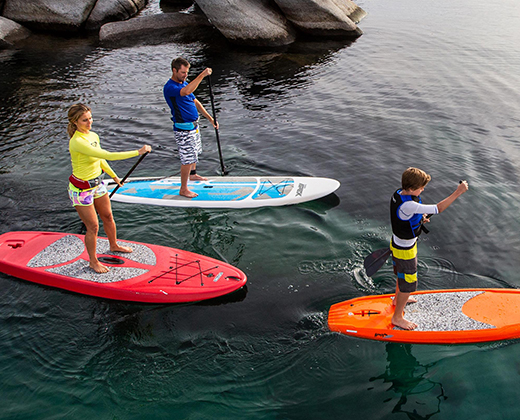How to Stand on a Paddleboard
Learn how to stand on a paddleboard and keep your balance with these beginner tips from a SUP instructor.
Before you dream of endless hours on the water or setting out on a rustic river trek, you must first learn how to stand on your board.
Start off in knee-deep water and free of any obstacles.
Find the center of the board — it’s easy to find because this is where the handle is located on most boards. Climb onto the center in a kneeling position. Line your knees up with the front of the handle, keeping them about shoulder width apart.
For many beginners, this position is a comfortable spot to practice taking a few paddle strokes before standing up. This is also a good position to get into if you need a break from standing or you are facing unfavorable conditions.
When you are ready to stand up, go on all fours and place the paddle under your palms while tenting your fingers. Once you’re ready, you’ll stand up on the board one foot at a time. Place your feet where your knees were and try to keep your heels flat as you come up from a squatting position.
Slowly slide your hands into position on the paddle, and take the first stroke right away — this is important to build momentum.
“SUP is like riding a bicycle; the more momentum you can build, the more stable you will be,” says Senior American Canoe Association SUP Instructor Seth Bloomgarden. “Remember to stay loose during the process. This will help you to absorb the ripples or waves created by boats.”
It may be helpful to practice standing on your board on the shoreline before hitting the water. This will allow you to become familiar with the motion of getting on the board.
After standing up on your board, get into the SUP stance to maintain balance. Your feet should be parallel, about hip-width distance apart, centered between the handle and the rails. Keep your toes pointed forward with your knees slightly bent. Keep your head and shoulders steady and upright, and shift your weight by moving your hips.
Now that you’ve learned how to stand on your board, you’re one step closer to paddleboard bliss. It’s now time to learn how to master some SUP basics, including the forward stroke.








